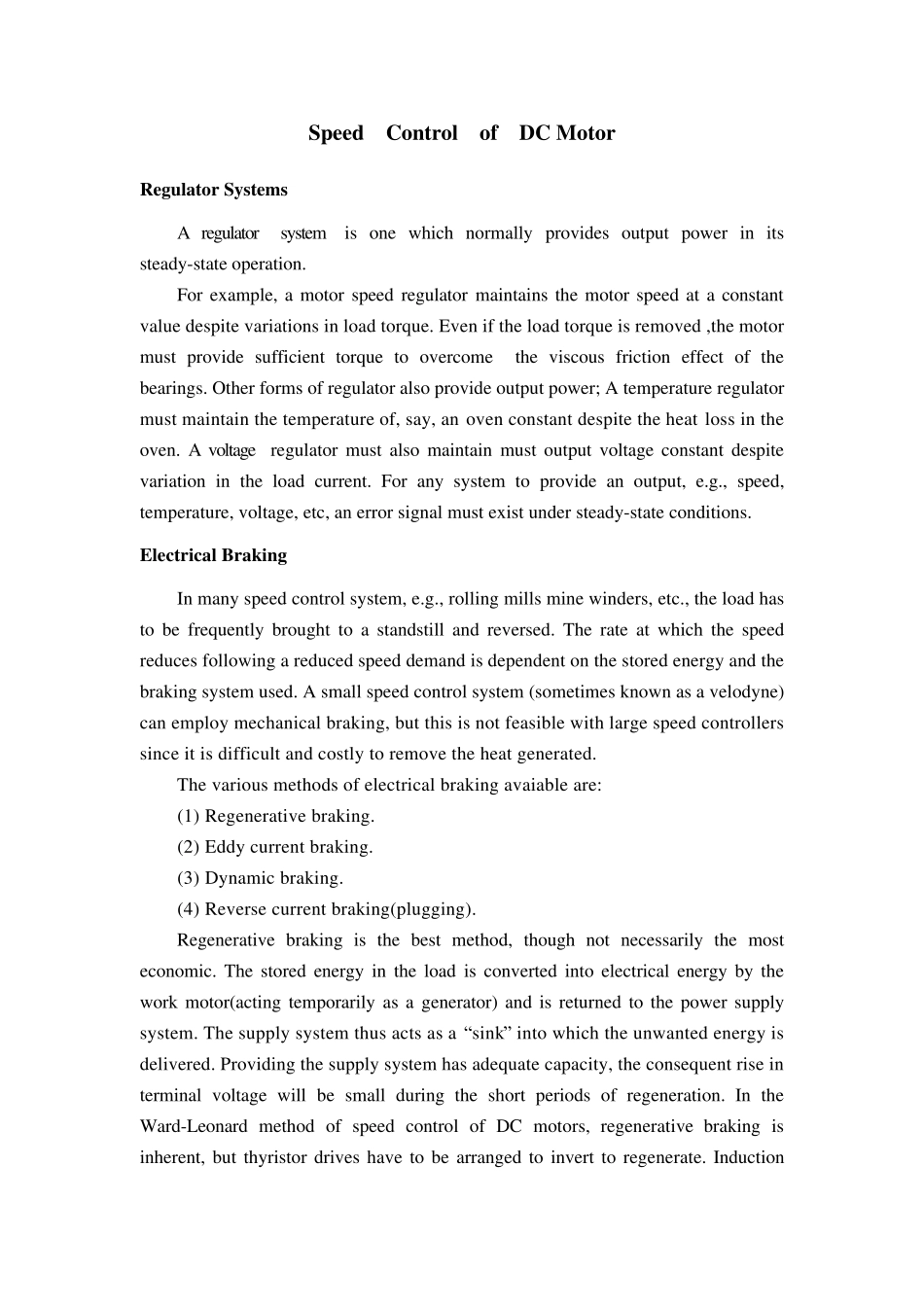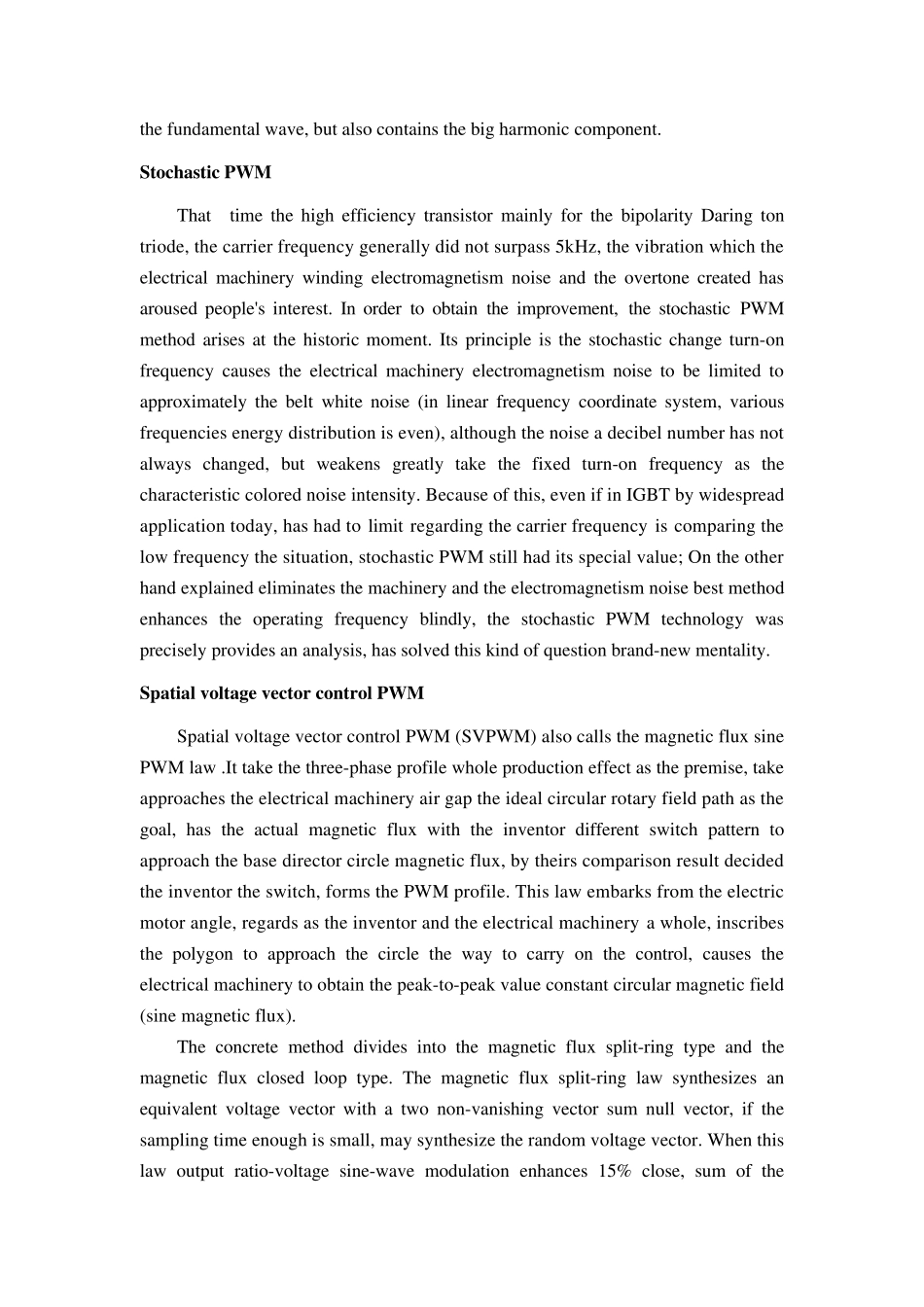Speed Control of DC Motor Regulator Systems A regulator system is one which normally provides output power in its steady-state operation. For example, a motor speed regulator maintains the motor speed at a constant value despite variations in load torque. Even if the load torque is removed ,the motor must provide sufficient torque to overcome the viscous friction effect of the bearings. Other forms of regulator also provide output power; A temperature regulator must maintain the temperature of, say, an oven constant despite the heat loss in the oven. A voltage regulator must also maintain must output voltage constant despite variation in the load current. For any system to provide an output, e.g., speed, temperature, voltage, etc, an error signal must exist under steady-state conditions. Electrical Braking In many speed control system, e.g., rolling mills mine winders, etc., the load has to be frequently brought to a standstill and reversed. The rate at which the speed reduces following a reduced speed demand is dependent on the stored energy and the braking system used. A small speed control system (sometimes known as a velodyne) can employ mechanical braking, but this is not feasible with large speed controllers since it is difficult and costly to remove the heat generated. The various methods of electrical braking avaiable are: (1) Regenerative braking. (2) Eddy current braking. (3) Dynamic braking. (4) Reverse current braking(plugging). Regenerative braking is the best method, though not necessarily the most economic. The stored energy in the load is converted into electrical energy by the work motor(acting temporarily as a generator) and is returned to the power supply system. The supply syste...


